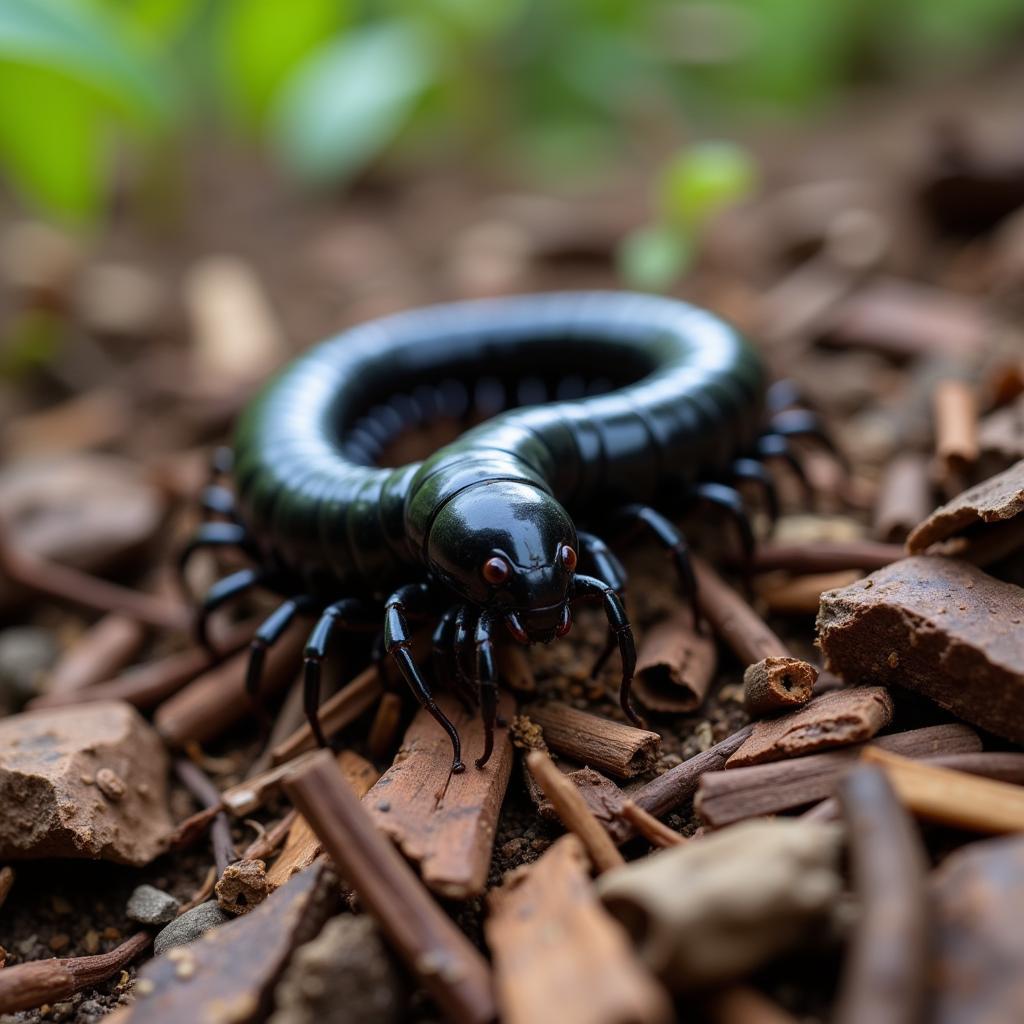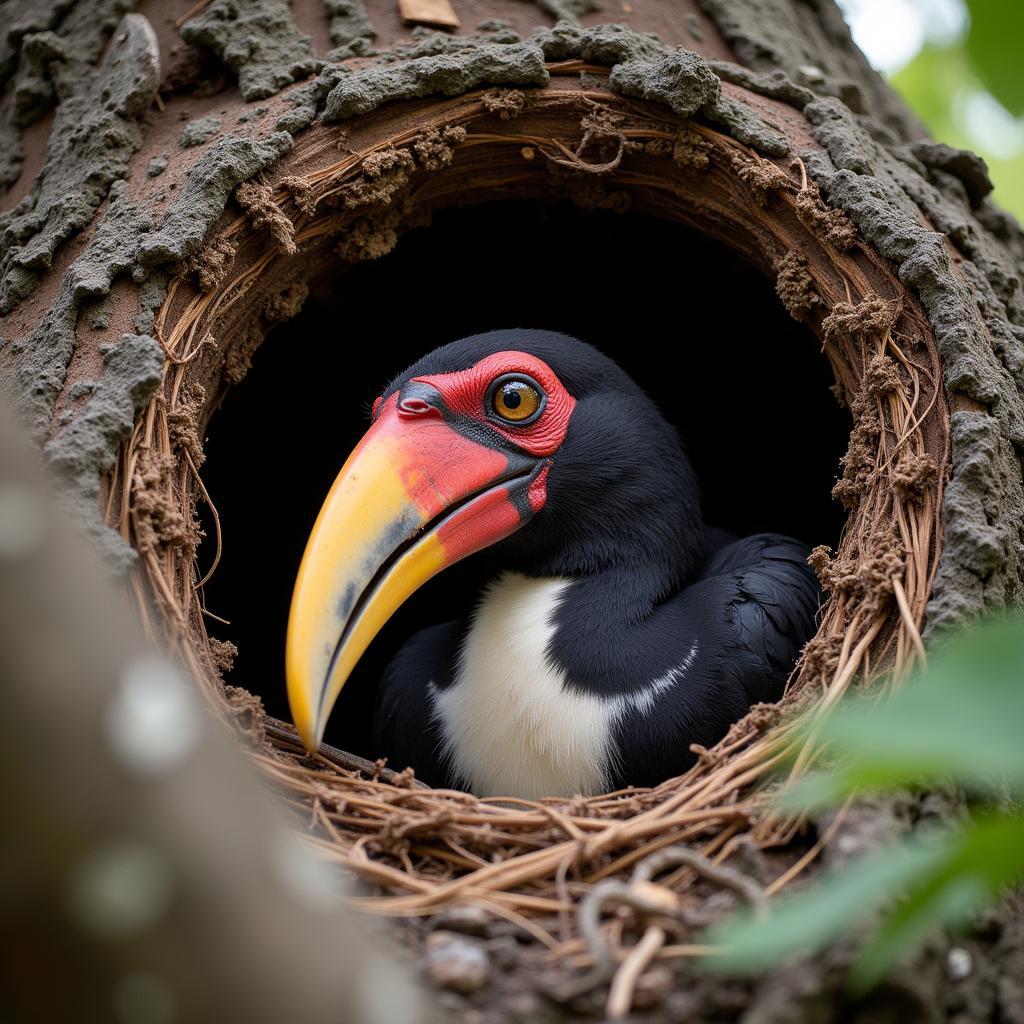Unraveling the Mysteries of the African Black Millipede
The African Black Millipede, a creature often misunderstood and misjudged, is a fascinating inhabitant of the African continent. Far from being just another creepy crawly, these invertebrates play a vital role in their ecosystems and boast some intriguing characteristics. Join us as we delve into the world of the African black millipede, uncovering the truth behind the myths and discovering the beauty in the seemingly ordinary.
 African black millipede in its natural habitat
African black millipede in its natural habitat
Dispelling the Millipede Myth: More Legs Than You Think
Despite their name, millipedes don’t actually have a thousand legs. The word “millipede” originates from the Latin words “mille” (thousand) and “ped” (foot), but the reality is a little less dramatic. Most millipede species have between 30 and 400 legs, with some rare species boasting over 700. These legs are arranged in pairs on most of their body segments, a key distinguishing feature from centipedes which have only one pair per segment.
The African Giant: A Gentle Giant?
While many millipede species are relatively small, the African giant black millipede (Archispirostreptus gigas) can reach impressive lengths of up to 15 inches. This makes them one of the largest millipede species in the world. Despite their imposing size, these gentle giants are not venomous and pose no threat to humans. In fact, they are often kept as pets due to their docile nature and fascinating behaviors.
A Crucial Role: Nature’s Recyclers
African black millipedes are detritivores, meaning they feed on decaying organic matter like leaves, wood, and fungi. This diet makes them vital contributors to the delicate balance of their ecosystems. As they consume and break down dead plant material, they return essential nutrients to the soil, aiding in the growth of new life.
Defense Mechanisms: More Than Meets the Eye
When threatened, African black millipedes employ a range of fascinating defense mechanisms. They can curl into a tight spiral, protecting their vulnerable underside with their hard exoskeleton. Some species also secrete a foul-smelling and irritating liquid as a deterrent to predators. This liquid, while harmless to humans in small quantities, can cause skin irritation or allergic reactions in sensitive individuals.
African Black Millipedes and Traditional Beliefs: Myths and Realities
In some African cultures, millipedes hold symbolic meaning and are often associated with myths and folklore. They are sometimes seen as symbols of prosperity, fertility, or even as messengers from the spirit world. While these beliefs vary widely between different ethnic groups and regions, they highlight the important role that nature and its creatures play in shaping cultural narratives and understandings of the world.
Conservation Status: A Future Uncertain?
While not currently classified as endangered, the African black millipede faces growing threats from habitat loss due to deforestation and agricultural expansion. Understanding their ecological importance and promoting sustainable practices are crucial for ensuring their continued survival.
FAQs: Unraveling the Millipede Mysteries
What do African black millipedes eat?
African black millipedes are detritivores, primarily feeding on decaying organic matter such as leaves, wood, and fungi.
Are African black millipedes dangerous?
No, African black millipedes are not venomous and pose no serious threat to humans. However, they can secrete an irritating liquid that may cause skin irritation in some individuals.
How long do African black millipedes live?
The average lifespan of an African black millipede is around 5 to 7 years, but they can live up to 10 years in captivity with proper care.
Where can I find African black millipedes?
African black millipedes are native to the African continent and are commonly found in tropical and subtropical forests, woodlands, and gardens.
Can I keep an African black millipede as a pet?
Yes, African black millipedes can make fascinating and low-maintenance pets. They require a humid environment with a substrate of soil, leaf litter, and wood for burrowing.
Exploring the World of Invertebrates
The African black millipede, despite its humble appearance, offers a glimpse into the incredible diversity and complexity of the natural world. By understanding and appreciating these often-overlooked creatures, we gain a greater appreciation for the interconnectedness of life on Earth and the importance of preserving all its inhabitants.
For further inquiries and assistance, please don’t hesitate to contact us:
Phone Number: +255768904061
Email: kaka.mag@gmail.com
Address: Mbarali DC Mawindi, Kangaga, Tanzania.
Our dedicated customer support team is available 24/7 to assist you.


